With an enormous influx of students, TU Delft is forced to rethink its campus real estate strategy. Plans for the next 12 years were recently presented.
For now, the EEMCS building will remain in use. (Photos: Marjolein van der Veldt)
- Environmental impact
Alongside these plans, TU Delft is also focusing on limiting the environmental impact. The ambitious goal is that the campus is CO2 neutral and circular by 2030. A plan was presented last Tuesday.
With a student population of over 25,000, debate has once again been sparked. How will TU Delft accommodate these students and its nearly 6,000 employees? And how will the city of Delft handle this?
During the annual stadsgesprek, an open meeting between the Mayor of Delft, Marja van Bijsterveldt, and TU Delft Rector Magnificus Tim van der Hagen, a strategy for a future-proof campus was presented. For the next 10 to 30 years, this strategy will be leading for all campus developments. But what can be expected? Delta takes you on a tour along some of the highlights.

With an increasing lack of space for students and employees, it’s no wonder that the higher floors of the iconic Electrical Engineering, Mathematics & Computer Science (EEMCS) building were recently reinstated. It is, however, still unknown for how long the building will remain in use. Research on the future of the 23 floor high-rise will start soon and will be conducted in three steps.
1. An assessment to see if the building can still be used by TU Delft.
2. If not, an assessment to see if the building can be used by an external party?
3. If both options are negative, consider demolition.
The outcome is expected within the next five years and is leading for the future of the EEMCS building.
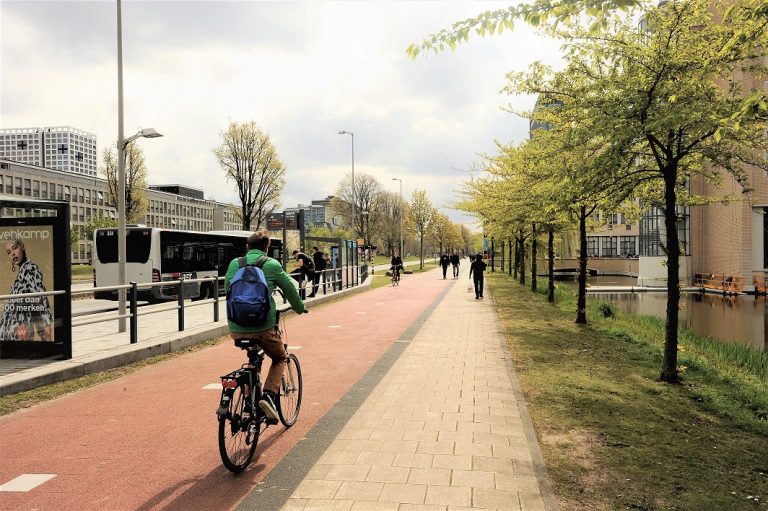
TU Delft is working towards an almost car-free campus where there will be more room for nature and pedestrians. Cyclists, public transport and local traffic – primarily suppliers – will still be able to pass through the heart of the campus. Cars will be welcome in new parking garages like P-sports around the edge of the campus. That said, TU Delft will strive to guide traffic flows better to relieve pressure on the Mekelweg. One way of doing this is by encouraging the Leeghwaterstraat to be used for cyclists.
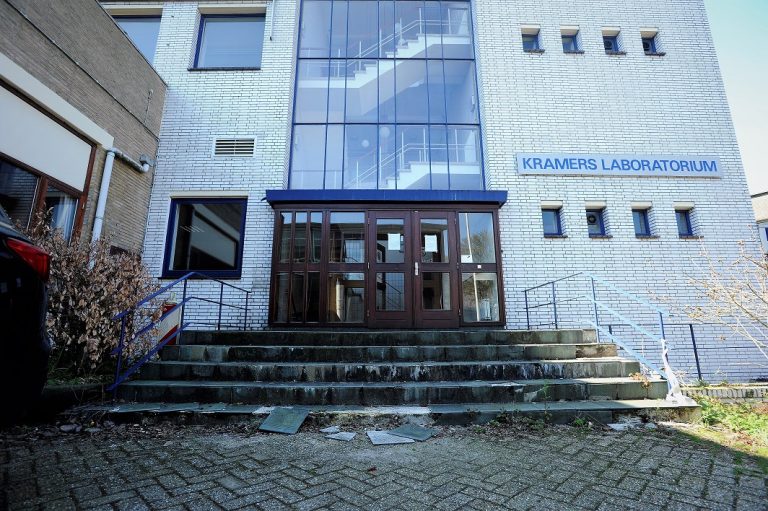 The Gele Scheikunde building is already up for sale.
The Gele Scheikunde building is already up for sale. Over the years, the university campus has gradually moved further southwards away from the city. Plans show that this shift will continue gradually as older buildings in the northern part of the campus, like Gele Scheikunde, will be put up for sale. The buildings in the central part, like Applied Sciences (AS) and Civil Engineering & Geosciences, will be used differently or more efficiently in the future. Currently, planning to renovate the CEG building is underway so that it can be used for a longer period of time.
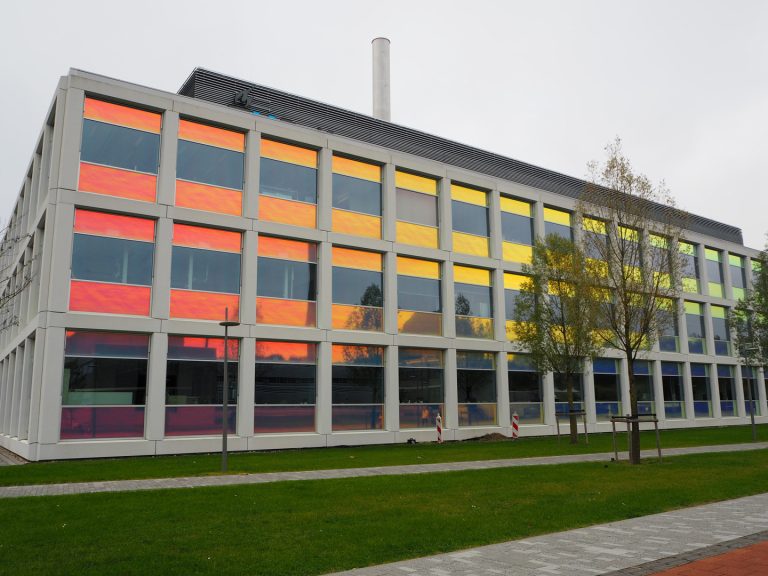 This building of Applied Sciences is an example of a low-rise building at TU Delft South. (Photo: Katja Wijnands)
This building of Applied Sciences is an example of a low-rise building at TU Delft South. (Photo: Katja Wijnands)If there is no more space in the centre of campus, new buildings might be built to the south.
High-rise, however, is not an obvious choice. A preference that, according to a spokesperson, ‘has been a strategy for a long time’. “Practice shows that high-rise buildings have too many limitations given the functions of TU Delft buildings (labs, teaching rooms, spaces for heavy equipment) and the number of people who use the elevators at the same time.”
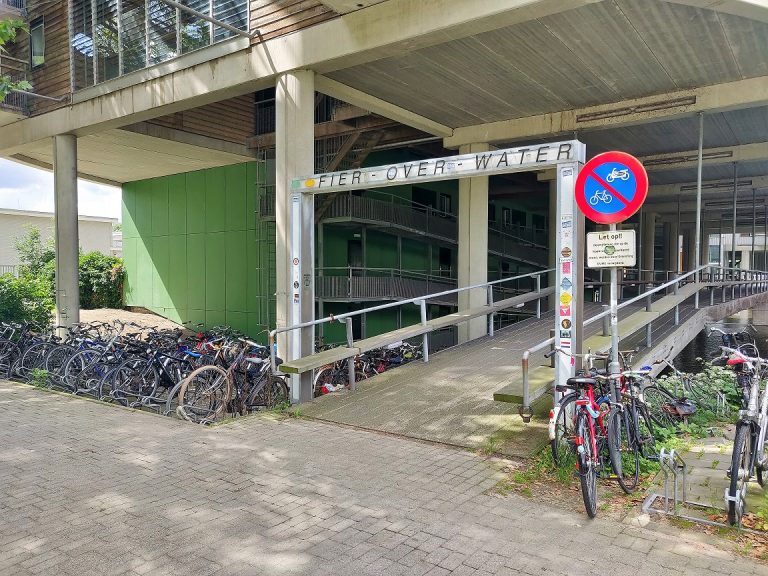 An example of student housing on campus are flats at the Balthasar van der Polweg.
An example of student housing on campus are flats at the Balthasar van der Polweg.With over 25,000 students and a tight housing market, TU Delft and the city of Delft also have to think about new housing solutions. With the development of Schieoevers, where 15,000 new homes will be built by 2040, the city is already thinking ahead. However, both parties are also in continuous discussion with the nearby municipalities of Schiedam, Rijswijk, The Hague and Rotterdam.
During the open meeting, someone asked why not build on the open fields between Delft South and Rotterdam? “Because it’s more than just building houses,” said TU Delft’s Vice President Operations, Nicoly Vermeulen.
“You’d have to create a whole new infrastructure if people are to live there. And please keep in mind that safety is also an issue, since this area is far away from residential areas.”
So what about temporary housing then? Since TU Delft itself isn’t allowed to invest public money in housing, it is reaching out to developers. With the student housing cooperative Duwo, it hopes to present concrete plans before the end of this year. Vermeulen: “We have allocated space at campus where there is room for new housing.”
Environmental impact
Alongside these plans, TU Delft is also focusing on limiting the environmental impact. The ambitious goal is that the campus is CO2 neutral and circular by 2030. A plan was presented last Tuesday.
Do you have a question or comment about this article?
m.vanderveldt@tudelft.nl

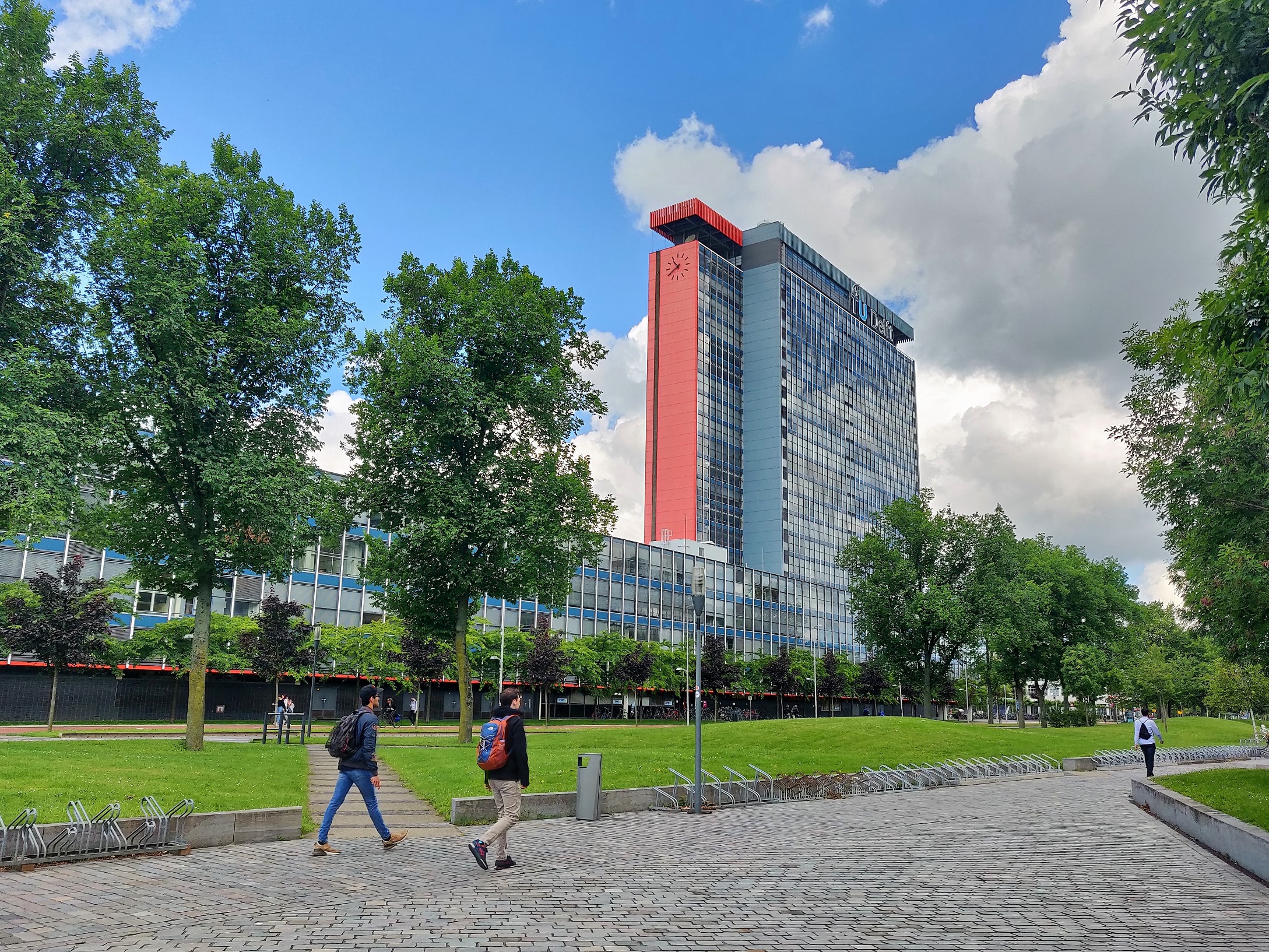
Comments are closed.